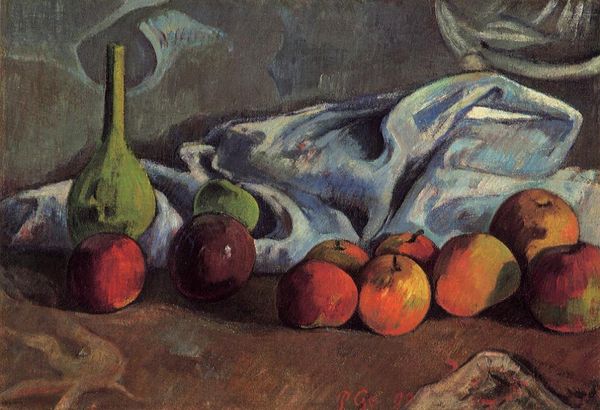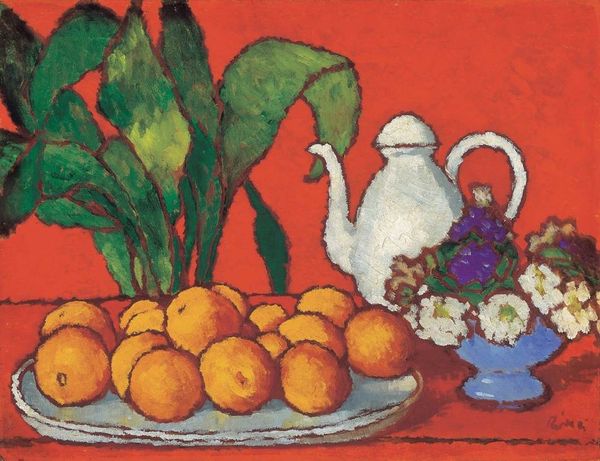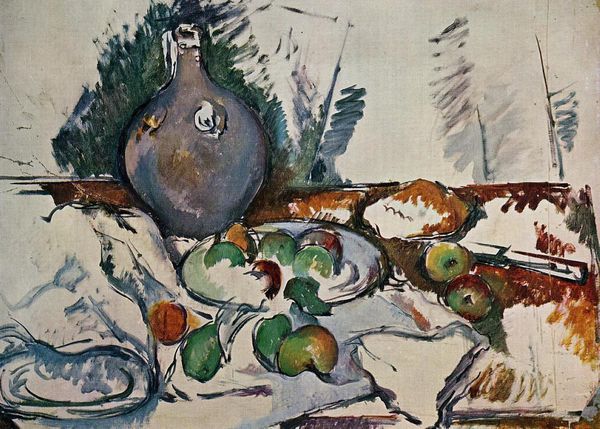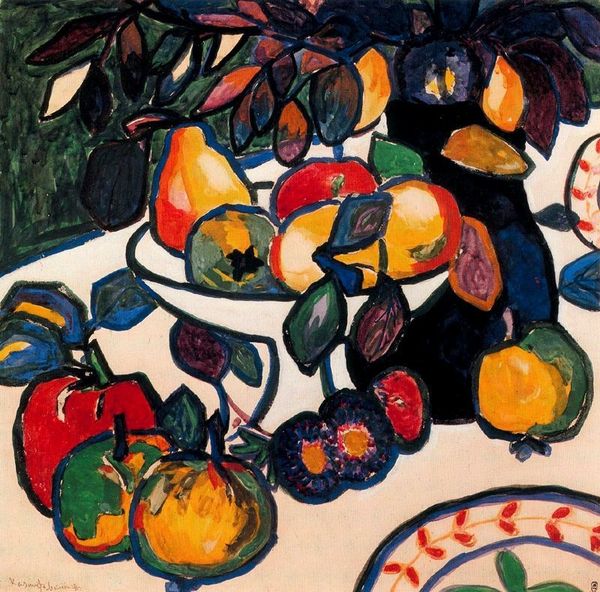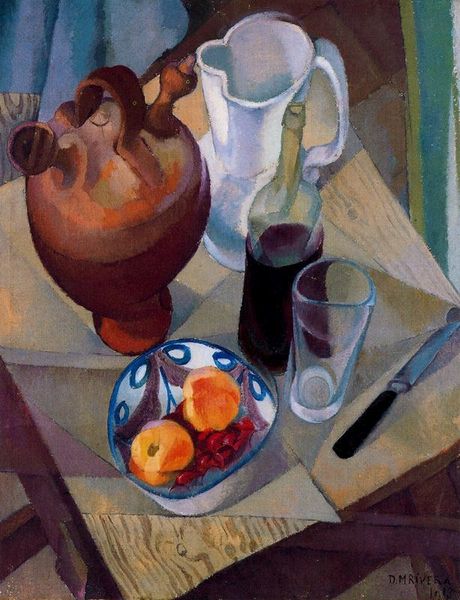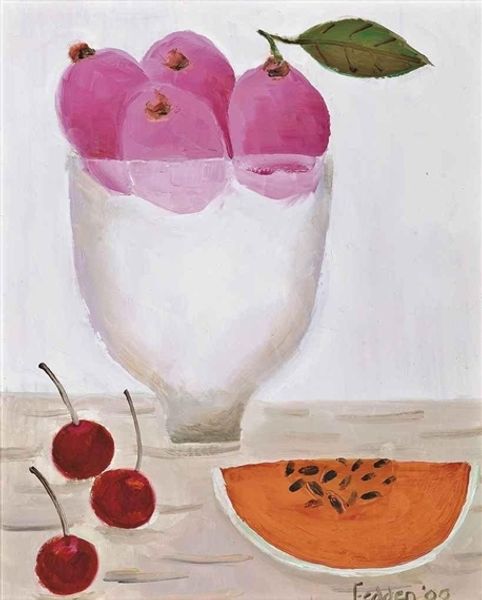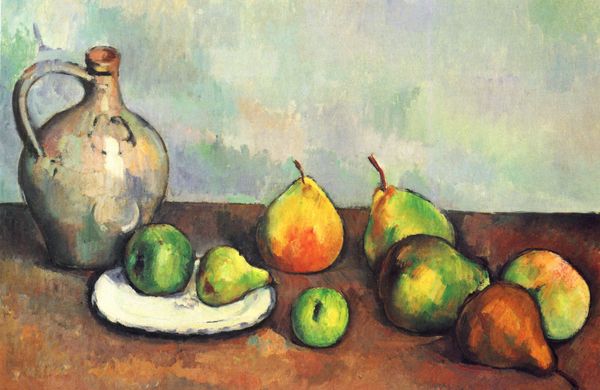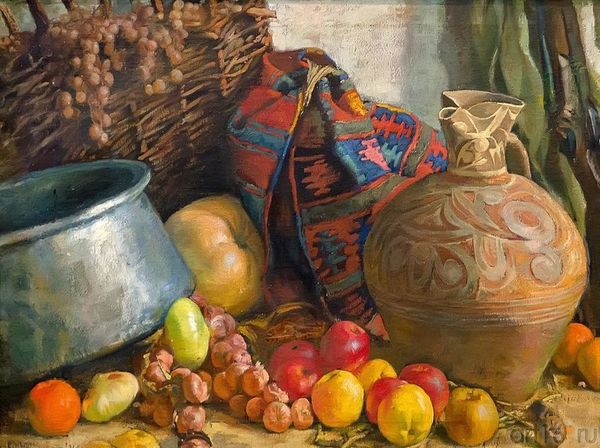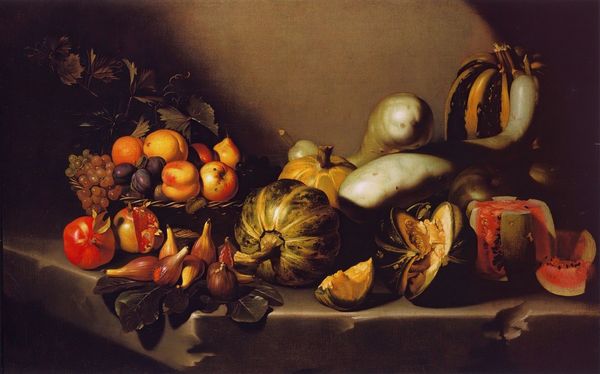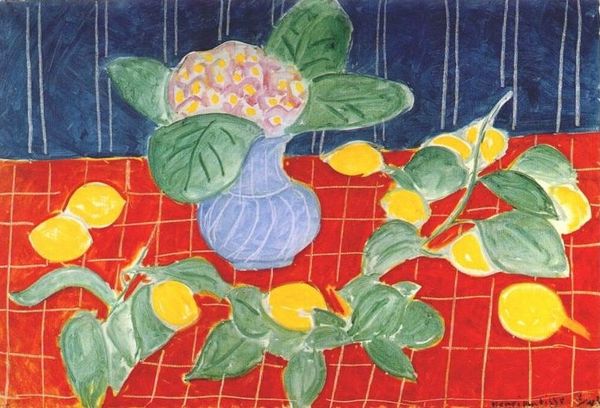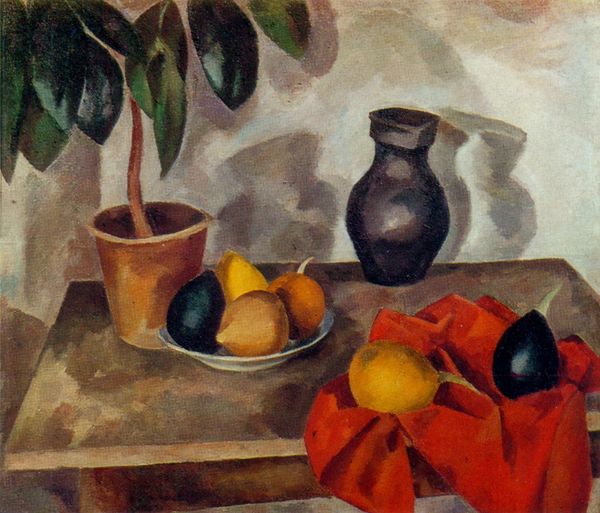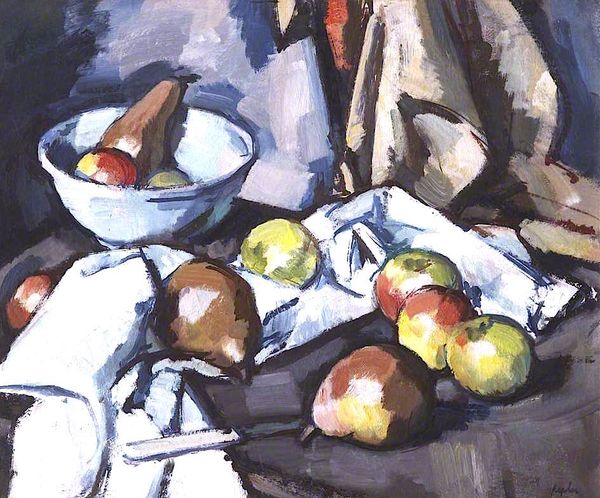
Dimensions: 50 x 71 cm
Copyright: Public domain US
Editor: Here we have Martiros Sarian’s "Grapes," painted in 1911. It's an oil painting, a vibrant still life. I’m immediately struck by the bold, almost simplified forms. What stands out to you about the composition and use of color? Curator: Indeed. Notice how Sarian uses a restricted palette, favoring analogous colors and strong value contrasts to create structure. Observe the reduction of natural forms into geometric shapes. How does this abstraction influence your perception of the subject matter? Editor: Well, it makes it feel less about the individual grapes and more about the arrangement as a whole. The shapes and colors become more important than the realistic depiction. Curator: Precisely. Note the interplay between the rounded forms of the fruit and the sharp, vertical thrust of the vase. Consider how the artist balances the weight and distribution of color across the canvas. Editor: I see that, the red grapes kind of echo the vase, while the blue grapes balance them out. It almost feels like a carefully arranged equation. What does that mean for the artwork overall? Curator: I suggest that you note the structural elements rather than symbolic ones. Focus on how lines, shapes, colors, and textures create their own system of meaning separate from any pre-existing narrative associations of the work itself. Do you find value in analyzing this piece’s internal dynamics over thinking about historical factors? Editor: Definitely. Seeing it that way, I appreciate how much visual information can be conveyed just through shape and color relationships, without getting caught up in trying to interpret some hidden story. Curator: Understanding form allows us to understand not only one artist, but all artists, which then empowers us. Editor: This focus on the formal elements really helped me see how the artist uses structure itself to create visual interest. Thank you!
Comments
No comments
Be the first to comment and join the conversation on the ultimate creative platform.


